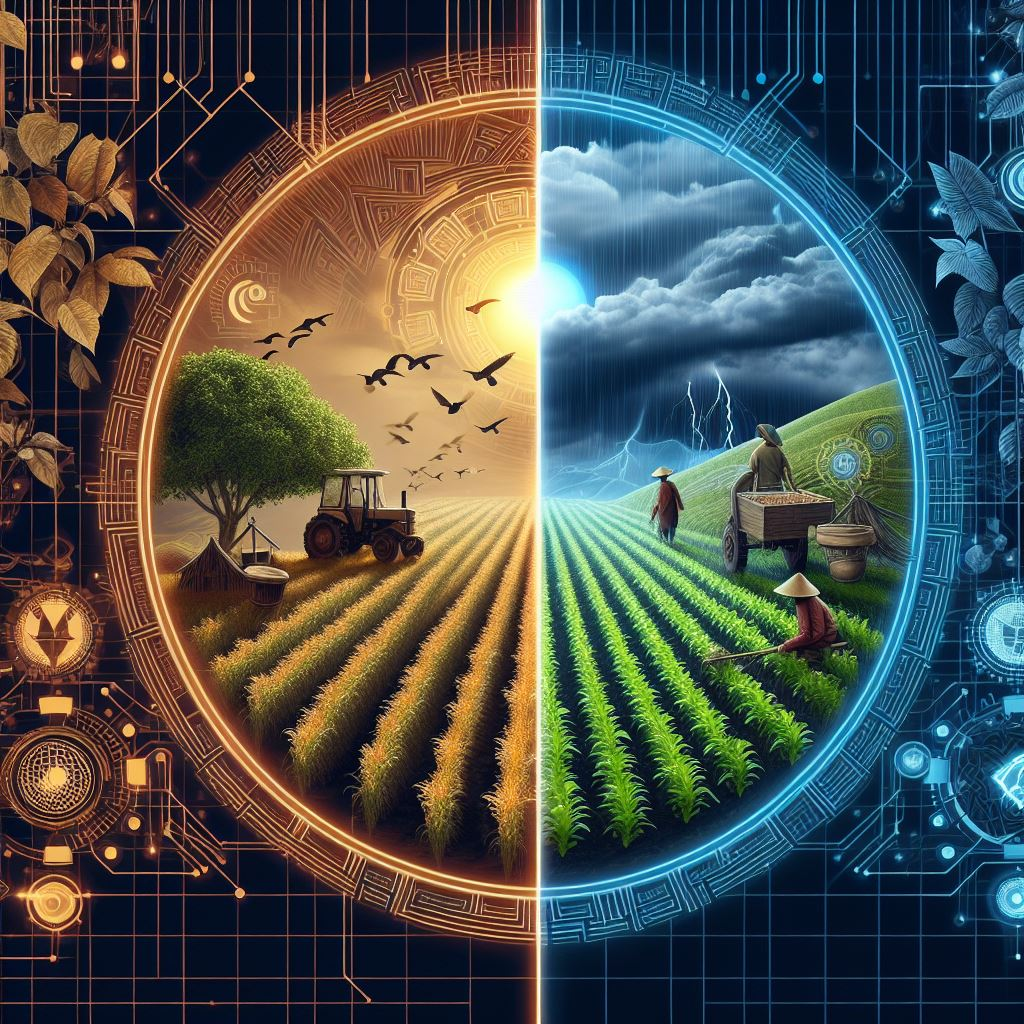In the face of growing global food insecurity affecting approximately 2.4 billion people, the spotlight is on digital agriculture as a transformative force.

In the face of growing global food insecurity affecting approximately 2.4 billion people, the spotlight is on digital agriculture as a transformative force. The U.S. Agency for International Development (USAID) emphasizes the pivotal role digital technology must play in food systems, offering a new planning tool to integrate digital solutions seamlessly into resilience and food security strategies.
Digital Agriculture: A Global Roadmap
The World Bank contributes to this vision with a roadmap for building the digital future of food and agriculture. This comprehensive guide underscores how digital agriculture holds the promise of enhancing yields, reducing food loss and waste, and promoting sustainable practices worldwide.
The Broad Spectrum of Digital Agriculture Technologies
Digital agriculture encompasses a spectrum of technologies, ranging from precision agriculture and digital financial services to data-driven agriculture and ICT-enabled extension services. This array of innovations holds the potential to increase efficiency, reduce waste, and improve yields, all while championing sustainable practices and lessening the environmental impact of agriculture.
Empowering Farmers through Informed Decision-Making
One key aspect of digital agriculture is its ability to empower farmers through informed decision-making. By leveraging digital technology, farmers gain insights into optimal practices for planting, fertilizing, and harvesting crops. This not only leads to higher yields but also contributes to increased profitability, fostering a more sustainable and economically viable agriculture sector.
Benefits Beyond the Farm: A Win-Win for Consumers
Consumers, too, stand to benefit significantly from the digital revolution in agriculture. The transparency and traceability enabled by digital technologies allow consumers to make informed choices, opting for healthier and more environmentally friendly food options. As individuals become more conscious of their food choices, the demand for sustainably produced goods is likely to rise, creating a positive feedback loop.
The Global Challenge: Navigating Food Insecurity and Environmental Pressures
Despite the promise of digital agriculture, the global food supply chain faces multifaceted challenges. The convergence of climate change, geopolitical conflicts, volatile commodity prices, and inflation intensifies the pressure on food systems. Experts predict an 80% increase in food prices by 2050, coupled with a projected 30% decline in crop yields by 2080. Addressing these challenges requires innovative solutions and collaborative efforts.
Collaborative Efforts at SAP’s Hudson Yards Office
Recent discussions at SAP’s Hudson Yards office in New York brought together agriculture experts and policymakers to explore collaborative efforts between the private and public sectors in building a more sustainable food supply.
Anja Strothkamper, Global Vice President of Agribusiness and Commodity Management at SAP, highlighted the company’s commitment to co-innovating with agribusiness leaders. The goal is to digitalize the entire farm-to-consumer value chain, creating an affordable, efficient, and resilient ecosystem.
Case Study: SAP and VISTA’s Transformative Partnership
A standout example of such collaboration is the partnership between SAP and VISTA, a subsidiary of Germany’s BayWa, the largest digital agricultural company. This partnership combines satellite imagery with AI-driven algorithms to create digital twins capable of simulating predictive forecasts for optimized decision-making in farming. Factors such as soil quality, crop health, water availability, and weather conditions are considered to provide farmers with actionable insights.
Tobias Fausch, BayWa’s CIO, elucidated how this technology enables farmers to automate crucial processes, from soil preparation to irrigation, fertilization, crop rotation, and harvest times. The digital models not only optimize crop yields sustainably but also assist governments in managing water resources efficiently, especially in the face of unpredictable events such as droughts.
The Impact on Farmers and Governments
The tangible impact of this technology is evident in success stories, such as a soybean farmer in India achieving record yields despite a drought, thanks to optimized crop management through VISTA. Beyond individual farmers, the collaboration provides valuable data for governments to make informed decisions regarding water resources and other critical factors.
Scaling Access: Digital Solutions for All
SAP’s digital solutions, including the integration of VISTA with SAP Intelligent Agriculture, aim to make advanced technology accessible across the entire food value chain. From smallholder farms to major agribusinesses, the digital twin concept becomes a powerful tool triggering automated processes such as irrigation, fertilizer services, storage expansion, and transportation capacity increases.
A Forward-Thinking Vision for a Resilient Future
As the world grapples with the challenges of the future, SAP’s commitment to evolving agriculture solutions with cutting-edge technologies, including AI and generative tools, demonstrates a forward-thinking approach. The vision is to democratize intelligent agriculture with data-driven insights, revolutionizing the sustainable food value chain for a more resilient and secure future.
In conclusion, the digital revolution in agriculture is not just a technological advancement; it’s a lifeline for addressing global food insecurity, making informed choices, and building a more sustainable future for our planet.